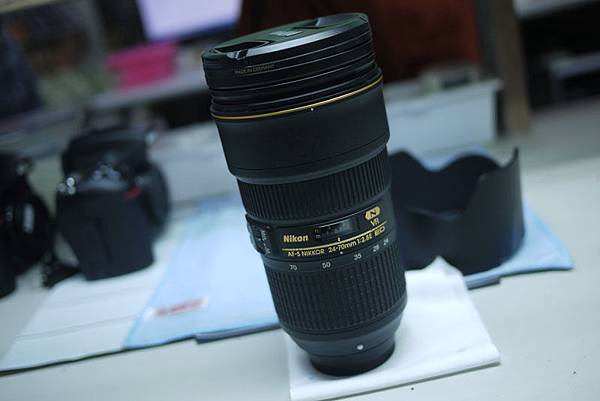
Depth analysis on “ Nikon 24-70mm F2.8E VR two-edged sword "
Why is it a two-edged sword? Though Vibration Reduction Unit is quite useful, it can be dangerous too. It’s like two-edged sword, depends on how you play this “mighty sword”
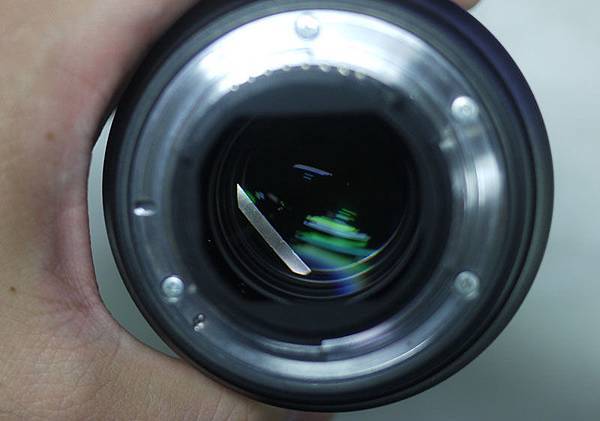
The impact of outside force jolted the inside part of lens tube, caused it distorted and fell off. You can see it clearly from bayonet, it’s part of VR unit, and it’s also the key issue of this mighty two-edged sword .
The impact which caused the inside part fell off and distorted is quite strong (you can see it on the following photos), but the body and the outside lens tube are still remain intact (lens hood has broken), this is the proof of the exquisite sword with its toughness, the rigidity is handled to perfection .
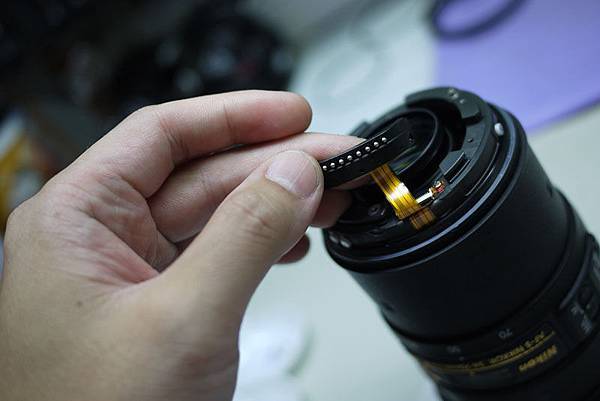
To avoid the fall-off part scratching inner lens, we have to take it out first. ATTENTION: the following dismantling is “a necessary evil”, please “DO NOT COPY” .
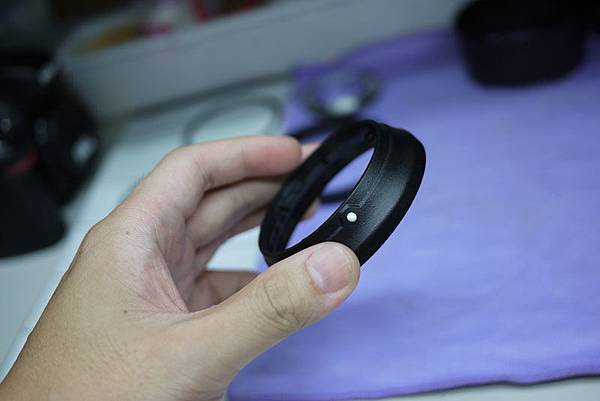
Dismantled bayonet, which in the previous version of Nikon 24-70mm F2.8G is made of metal, is easily jammed by slightly impact. (please refer to 深度解剖Nikon 24-70mm F2.8G )
But in the new version of Nikon 24-70mm F2.8E VR, it is replaced by a more flexible plastic synthetic material - a very fine design, will explain it later on.
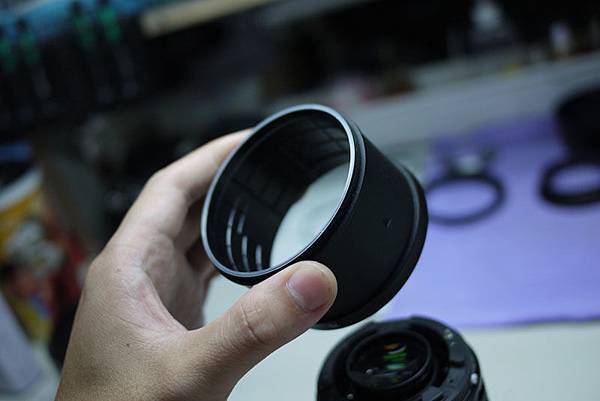
Same as Cam tube (Rumor has it that it’s made from carbon fiber composite. )
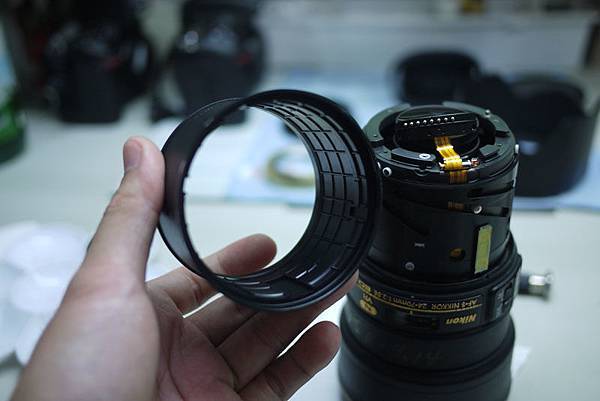
Let’s take a look from the inside, the structure design of the plastic synthetic material is very solid, the inside grid can keep its flexibility and avoid distortion at the same time, it can also absorb some of the impact - excellent
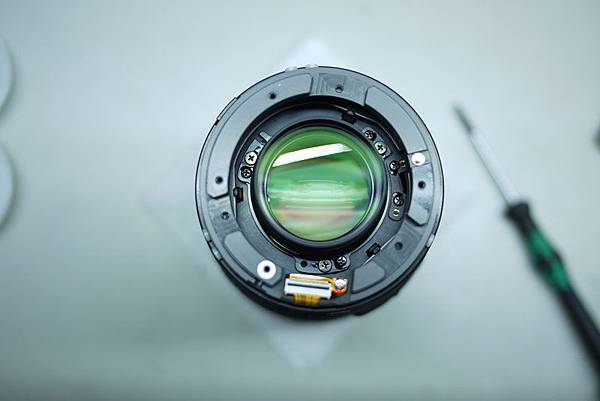
Now, we are going to take out the fell off part directly.
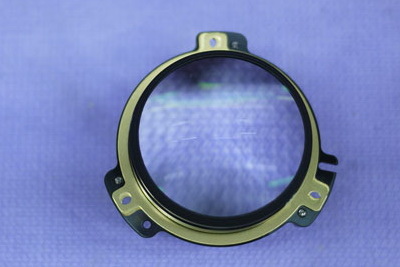
to avoid scratching the lens
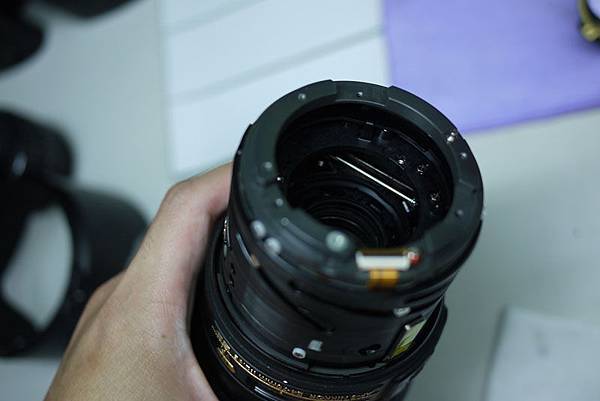
As you can see the fell off VR part is at the side of the inner lens tube, without a word, I take it out immediately.
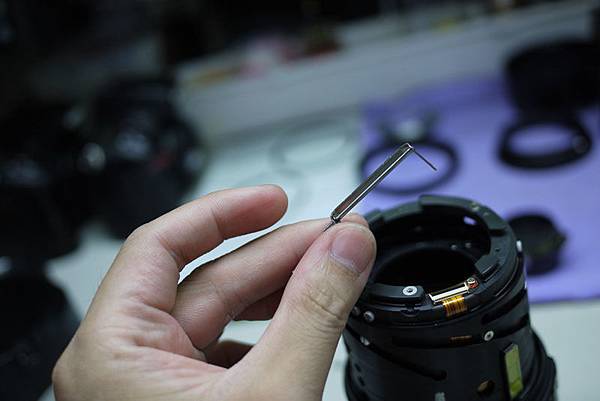
This is the one...do not think it can falls off easily just by slightly hit, NO, it’s NOT !
It is not an easily falling off part, when VR is in action, it moves too, but won’t fall off easily.
Take a closer look, wow~~~ it was distorted! What an impact!
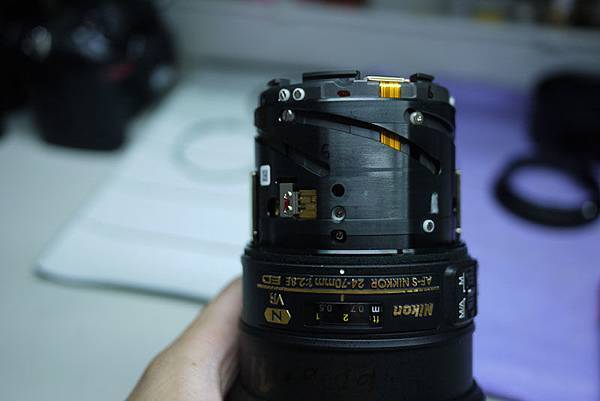
In order to put it back, I have to keep the dismantling going. BEWARE - DO NOT DISMANTLE IT BY YOURSELF IF YOU ARE NOT A PROFESSIONAL TECHNICION (PS you would understand if you ever dismantle the inner lens tube of Nikon 105mm F2.8Gmicro.)
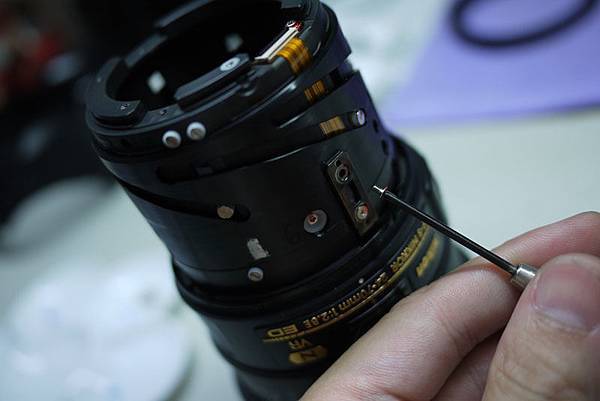
There are two linkage rods at each side of the lens tube which drive the focus, control lens tube’s zoom. The two linkage rods design is extraordinary .
as early stage’s lens only has one linkage rod, so does Nikon 24-70mm F2.8G .
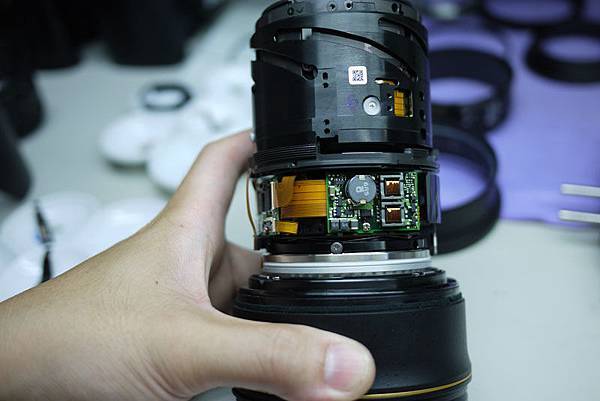
Now you can see the internal structure of the lens
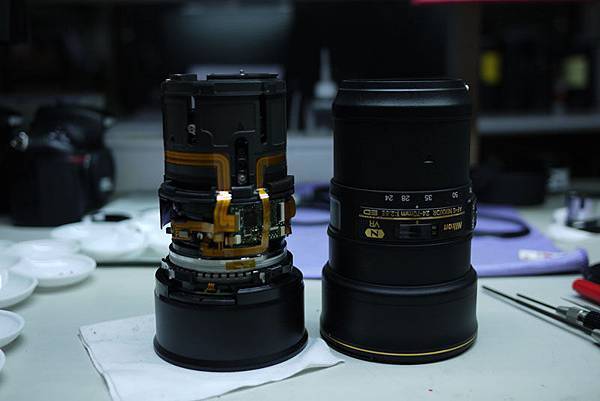
This lens is composed of 2 parts inner main body (left) and outer plastic tube (right)
Clearly, the metal made inner tube enhances the structure of the back-end main body, improves it’s quality .
place all sensitive electronic parts, such as SWM, sensor, IC in the center to protect them, cooperate with the front-end metal zoom tube, the design is second to none .
Combine with outer tube which made from flexible plastic material, this combination is quite durable .
It forms the 1st layer’s durable outer tube, that protects the inner metal main lens tube from deviation even after long term use. This is the best lens design ever, it combines the virtue of flexibility and durability.
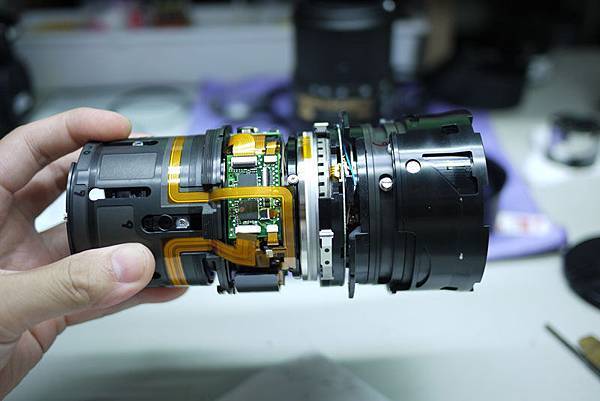
Take one more look at this inner design, outstanding !
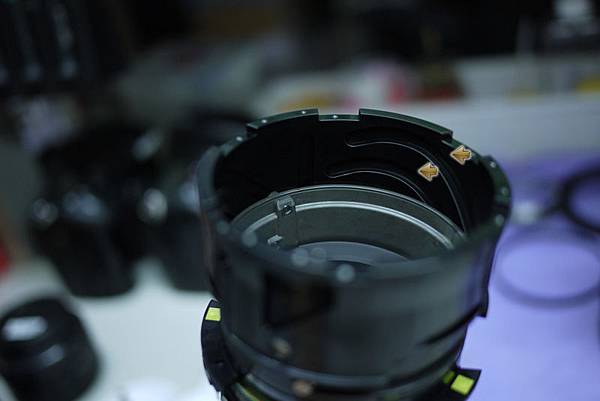
The double-track design of the front-end built-in zoom tube not only controls the position of zoom lens perfectly but also differs from previous version of Nikon 24-70mm F2.8G significantly.
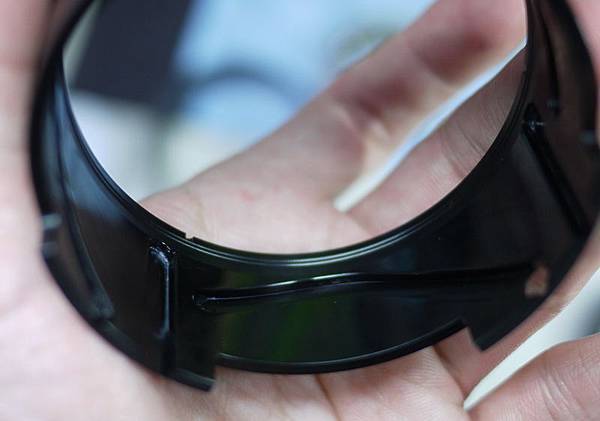
the design of the front-end built-in zoom tube for previous version of Nikon 24-70mm F2.8G is single track only.
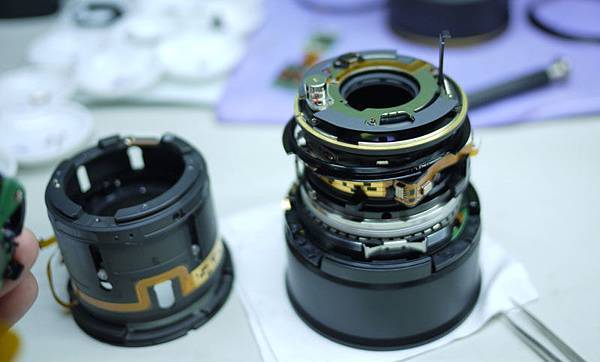
the design of the main tube is composed of upper main tube and lower main tube, this kind of design which in the past is for Nikon 300mm F2.8 or above model only
They put the expensive large lens design concept into this Nikon 24-70mm F2.8E VR design .
And because of the design, the difficulty of repairing this lens has increased significantly
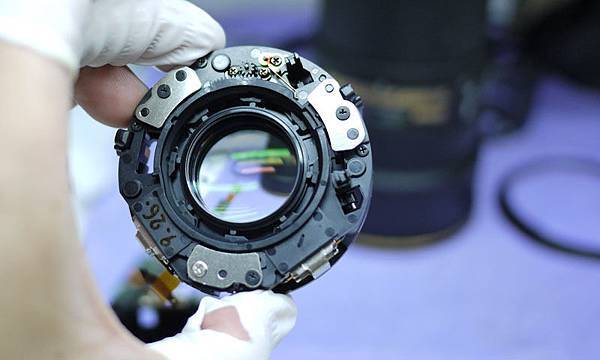
Dismantled VR unit is also improved, unlike Nikon 70-200mm F2.8G VRII’s design (abnormal sound occurred when it got loose )
When VR is off, it is locked through 8 positions, the notch makes it easily to position. It’s the best VR unit to date.
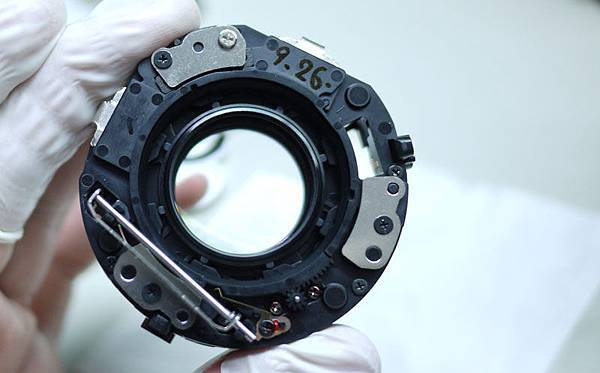
It’s a little bit difficult to fix it, not to mention to position it.
It’s hard to imagine how it happened??
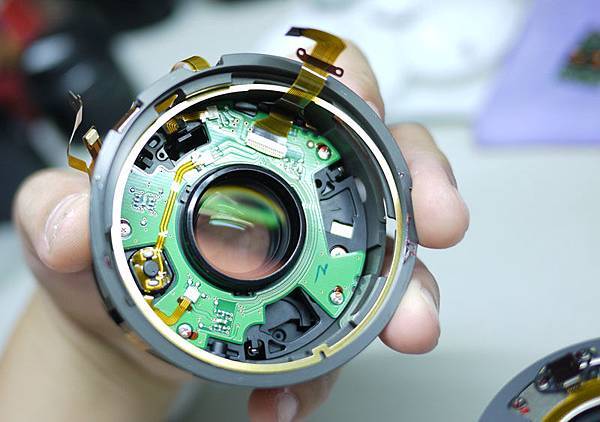
After fixed, start to reassemble VR Unit - the core of the two-edged sword .
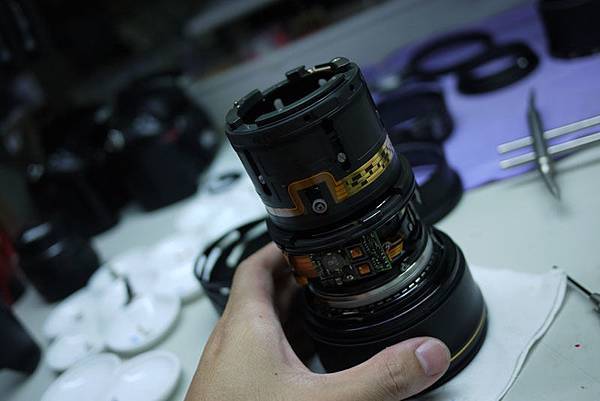
Assemble it back step by step.
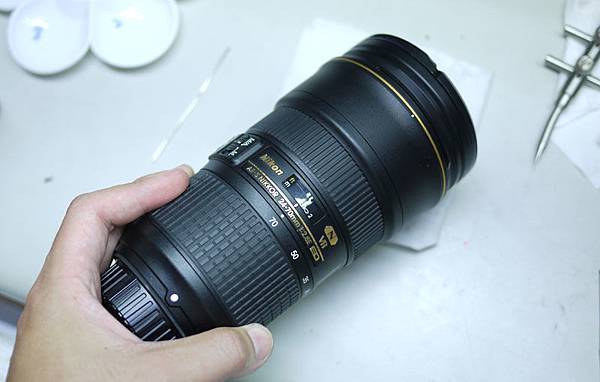
It looks done, but do not think this is done.
It took me 2 days to calibrate the image formation for this Nikon 24-70mm F2.8E VR, it’s a tough job!
Capable of dismantling and reassembling it doesn’t mean you can fix it, do not attempt to do it on your own, I MEAN IT !
To sum up, I believe the design for this Nikon 24-70mm F2.8E VR is nearly perfect, there is only one tiny defect in lens hood, which is not easy to put on.
I mean the DESIGN of lens tube.
Many people said the image formation of this lens isn’t as good as Nikon 24-70mm F2.8G… what’s the difference ?
Rumour has it that the design of Tamron 24-70mm F2.8 A007 is great, is it true ?
We compared these 2 lenses, use Nikon 24-70mm F2.8G as focal length criterion
First comparison
Nikon 24-70mm F2.8E VR, call E 2nd
Nikon 24-70mm F2.8G, call G 1st
Tamron SP 24-70mm F2.8 Di VC USD A007, call A007
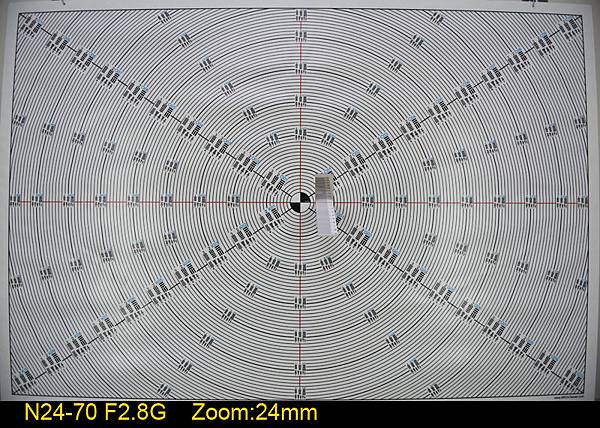
The sharpness for G 1st lens 24mm standard image quality can be reached to 80%, and the barrel distortion is obvious.
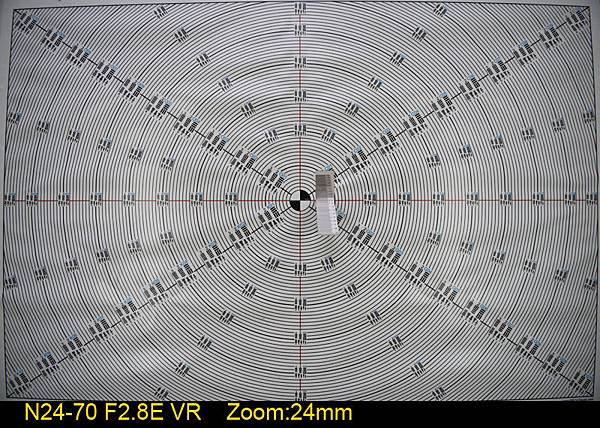
E 2nd lens 24mm, you can tell it is more close to G 1st lens 26mm when enlarge the image, and the vignetting is more obvious at the periphery. It is noteworthy that the image sharpness at the periphery is nearly perfect, although the barrel distortion is quite serious. It is incredible!
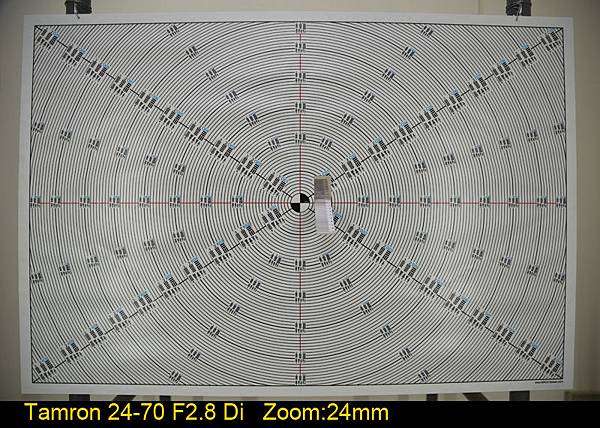
A007 24mm is even wider, it is more like 22mm . so we zoom A007 to 26mm in order to match G 1st lens 24mm. Please see the image below.
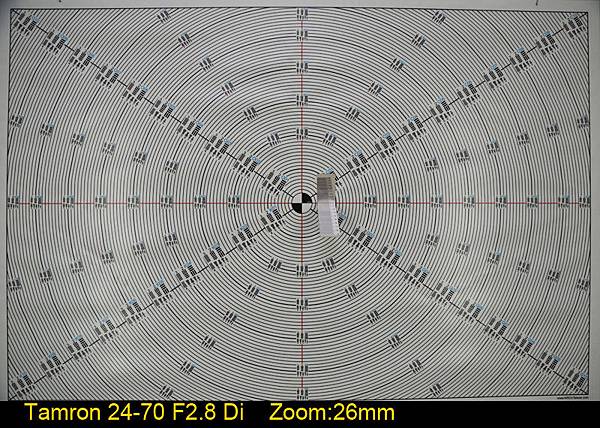
Incredibly, the image distortion control of A007 26mm is much better, the sharpness is reached to 95%, the wide-angle end almost beat G 1st lens.
Let’s take a look at 70mm comparison.
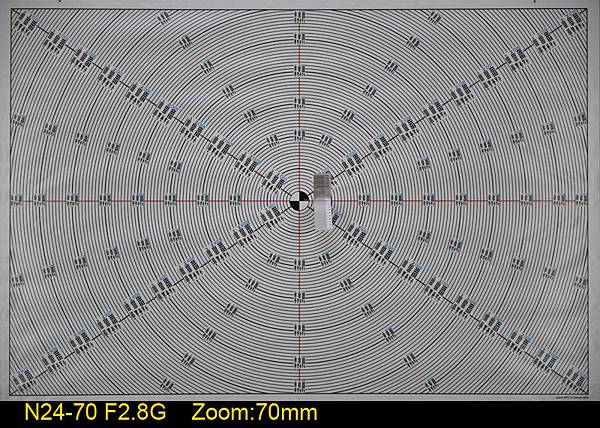
G 1st lens 70mm distortion control is quite good, the vignetting is not obvious, the image quality is above average, it can actually be set as a standard model.
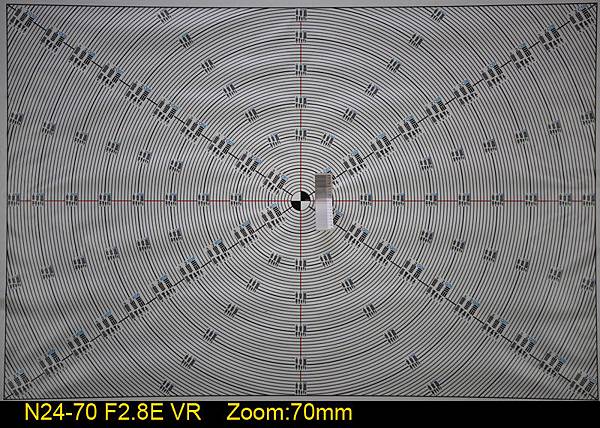
E 2nd lens 70mm , the barrel distortion appeared and turned inward clearly, the vignetting showed as well, the sharpness of the image is great!
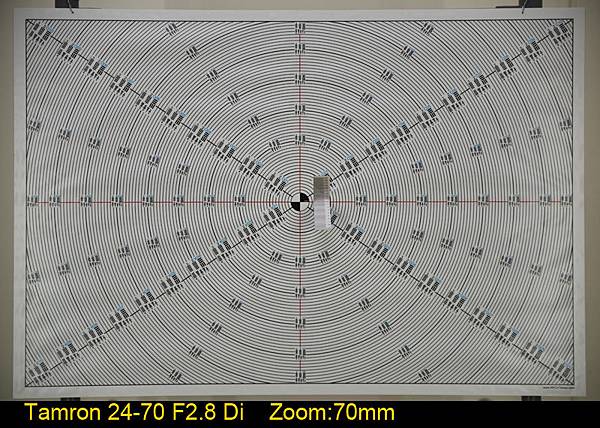
The length of A007 70mm doesn’t look like it should have, we estimated that it is 62mm only.
Not only that, the image sharpness isn’t good enough, especially the lower right corner. I wonder whether this A007 70mm optical axis had deviated. Let’s just leave it there.
There is another photo that we didn’t show here, it is a comparison of G 1st lens 62mm with A007 70mm .
In that photo, the barrel distortion & the vignetting of A007 appeared .
we speculated that Tamron SP 24-70mm F2.8 Di lens design is focus on wide-angle side, therefore telephoto side is cut short.
This is a quite smart design; because of its optical design and indoor shooting by wedding photographers, the usage of wide-angle is often to be compared with others.
Next, we compare
Nikon 50mm F1.4G, call 50.4G for short
Nikon 24-70mm F2.8E VR, call E 2nd lens for short
Nikon 24-70mm F2.8G, call G 1st lens for short
Nikon 28-70mm F2.8D, call D lens for short
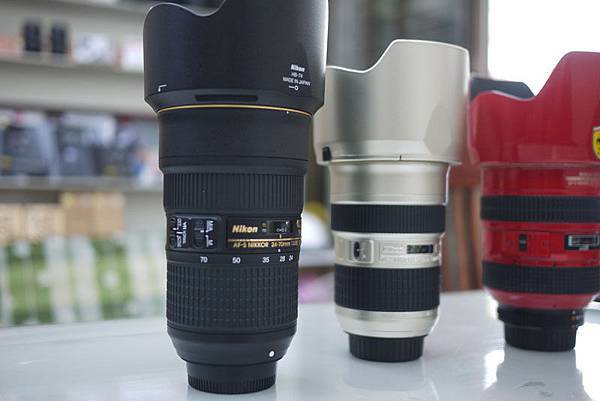
First, we see this
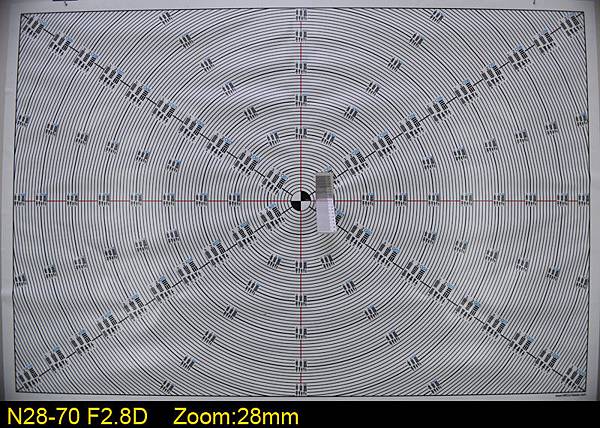
D lens 28mm, slightly vignetting, barrel distortion is acceptable, the image sharpness at 28-70 periphery reaches to 90%.
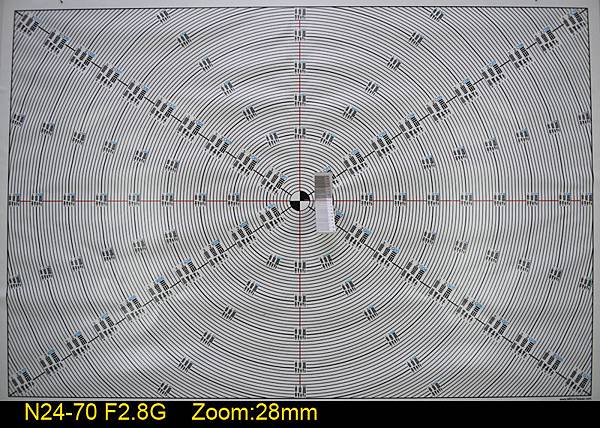
G 1st lens 28mm, image formation is quite well, slightly distorted, the image is excellent which also reaches to 90%
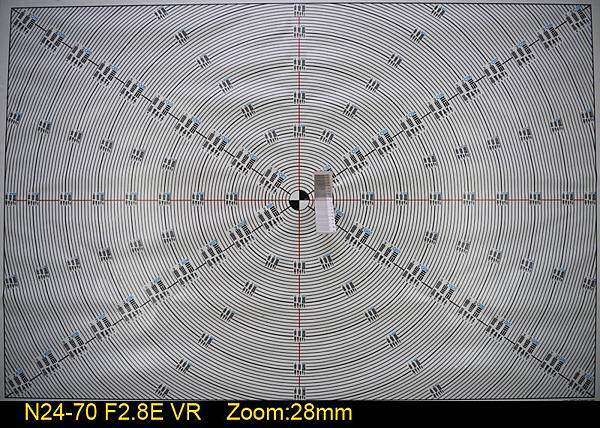
E 2nd lens 28mm is more close to 29mm (or 30mm), vignetting is the most serious one compared to the other two, its distortion is well controlled .
The image sharpness at periphery is always the best!
Now, we test the standard distance 50mm, we specially add Nikon 50mm F1.4G, aperture F2.8 for testing
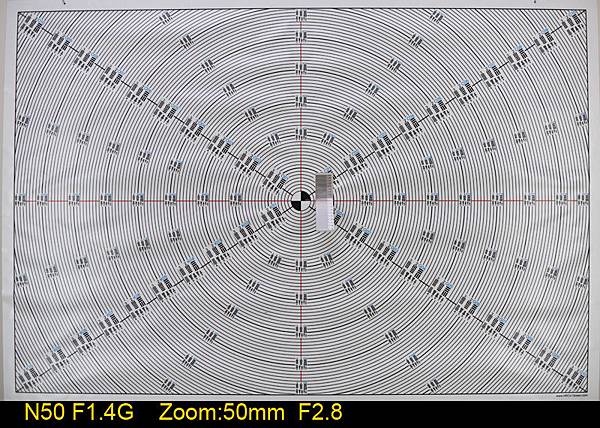
It is easy to see that although they both are 2.8 aperture, 50.4G is much brighter, it has a lot to do with lens’s structure.
But standard 50 prime lens which is very precise, image formation 95%, distortion is well controlled, vignetting is almost none...there is nothing to comment! Simply standard !
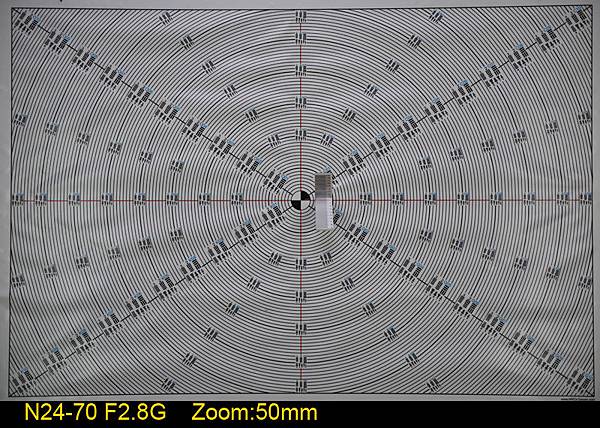
Actually, G 1st lens 50mm is more close to 50.4G’s control, slightly distorted, 95% image formation, with a little bit vignetting ... Perfectly fine!
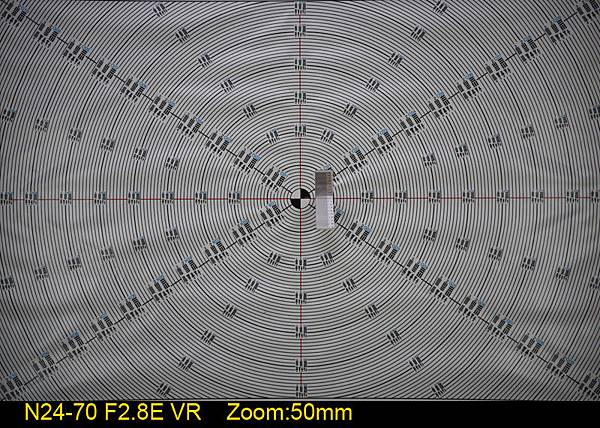
Do you feel that E 2nd lens 50mm is a little bit weird? That is because it is 52mm.
And, there is one place that this photo didn’t show - 50mm had distorted & turned inward already, vignetting is obvious too.
This is at standard range, image and vignetting are not good .... A little bit stunned !
But...It’s a comfort to know that the image sharpness is quite good.
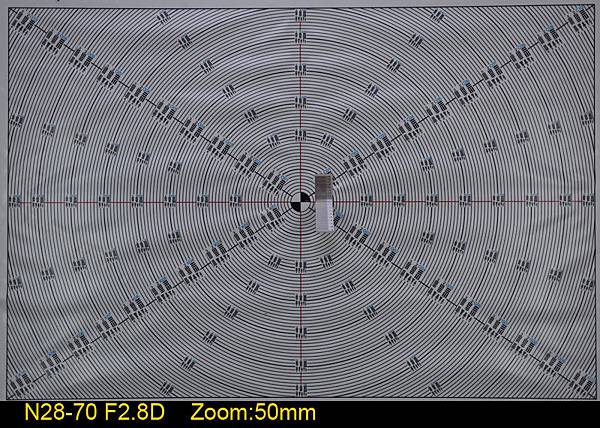
Let’s take a look at a decade ago’s king of the lens - D lens, 50mm is no significant difference, it has a little bit barrel distortion, and vignetting isn’t so obvious, other than that, it’s still in the standard range.
To sum up 50mm’s focal length
E 2nd lens has the most obvious vignetting
It's barrel distortion is also more serious than the others
The sharpness for all lenses is great.
Lastly, let’s see a comparison of 70mm
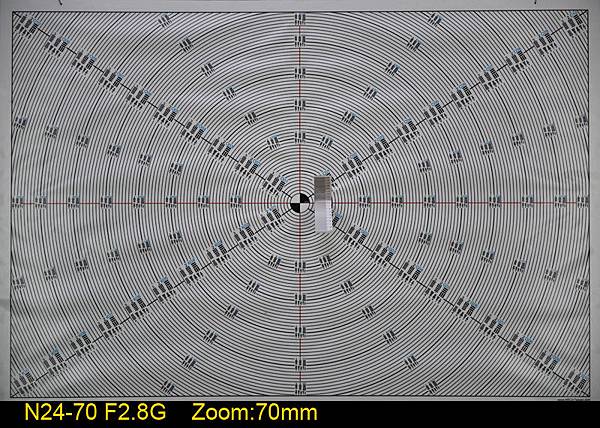
What we saw here is G 1st lens 70mm, it is actually pretty good.
Distortion isn’t serious, the image is good, so is the sharpness, vignetting control is slightly different. Still the same conclusion: standard.
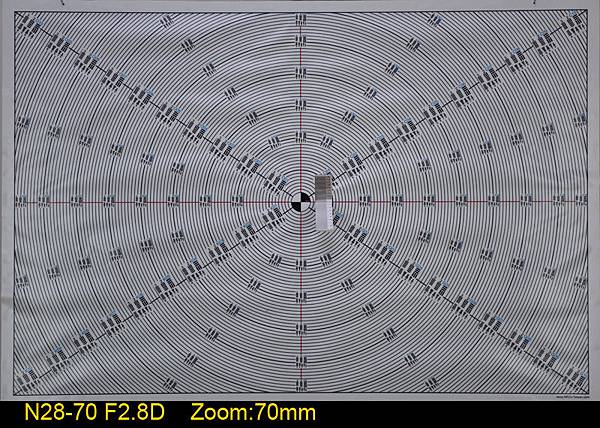
Let’s check D lens’s 70mm, it is actually similar to G 1st lens.
The image, vignetting, the sharpness are all similar to G 1st lens, it just.... D lens’s purple fringing couldn’t be seen here. Otherwise, you will see purple fringing all over the places, it’s very nasty !
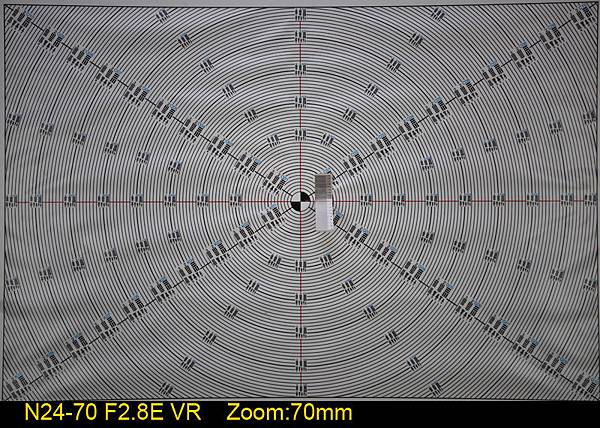
And then, E 2nd lens, this is more than 70mm, right? It should be 72mm (estimated )
The inward barrel distortion is very bad, so is vignetting, it is the top one from the beginning to the end.
It is unbelievable that how come the sharpness is still good when the distortion and vignetting are so terrible? But... It’s a good sign .
Also, 70mm was reshooting, the unique place for this one was we use G 1st to correct the white balance, what a surprise discovery !
D lens’s color is towards cool blue, 2nd E lens has more warm color, this is a preliminary result, it hasn’t been confirmed yet .
In conclusion
G 1st lens 26mm VS E 2nd lens 24mm ( same wide-angle )
We found that G 1st lens controls better, vignetting control is indeed better as well .
However, G 1st lens 24mm has much wider curve which leads to more serious distortion, the sharpness at the edge is completed gone, this explains why most of professional photographers won’t zoom G 1st lens to 24mm for shooting.
On the contrary, E 2nd lens can zoom to 24mm freely, as its 24mm edge’s sharpness is quite great.....the only thing left is vignetting issue, it remains unsolved .
But I met some photographers who like vignetting~~~ really !
50mm’s focal length
E 2nd lens’s 50mm is actually equals to G 1st lens’s 52mm
This is the most important issue worthy of careful consideration, 50mm is indeed the most standard focal length, you can see the control and distortion of G 1st lens are much better than E 2nd lens .
70mm’s comparison
It’s not difficult to discover that E 2nd generation lens’s 70mm is a bit further, it almost reach to 72mm (estimated )
If compare E 2nd lens zoom 68mm with G 1st lens 70mm, E 2nd lens’s barrel distortion and vignetting are still more serious than G 1st lens
So Nikon 24-70mm F2.8G 1st lens is obviously the winner if we only compare the image .
But the components of a lens not just image, it also needs VR Unit and faster AF-S .
After all, New version of Nikon 24-70mm F2.8E VR uses the best SWM which offers in-focus and speed, there is almost no other lenses can bit it .
Attention: What I said here is in-focus speed; that is a completely different issue if it’s only focus quickly but inaccurately .
The last Nikon 24-70mm F2.8E VR 2nd lens is almost the champion of vignetting and the barrel distortion.
Not to mention the structure, practicability, crashworthiness, VR shock absorption and in-focus speed, all in all Nikon 24-70mm F2.8E VR 2nd lens is the winner .
It is, the one and only “the mighty two-edged sword”
This is a tough topic, it took me a whole afternoon and night, and next morning for revising.
Daniel reserves the right to modify if the contents of this article is not thorough or with errors.
Also, there is no pressure and interests involved from outside when NRC Daniel writes articles, so I will slowly improve the testing’s width and depth for exploring the truth. This Nikon 24-70mm F2.8E VR was fixed at 20th Oct. 2016, afterwards I was examining
Just a thought, generic brands’ lenses are more and more well worth seeing, their lens craft is improving which has a significant improvement on image, so where is the difference between original and generic ?
We usually think that generic lens’s image is bad, is that true? What I saw on Sigma and Tamron is their image quality is almost above average, the only advantage that original lens has is the accuracy of the focus and its probability .
Tamron 24-70mm F2.8 design focus on wide-angle side’s image formation, sacrifice telephoto side, so it can became 22-62mm, it is an advantage of reverse thinking, and is more suitable for wedding photographer’s use .
When we focus on 24-70 focal length, can we also think about 20-50mm F2.8 focal length sort of, or 18-50mm F2.8, as Phase Fresnel use on E has reduced the weight tremendously and is able to eliminate the chromatic aberration~~~or a 1.8 zoom lens, it is also what Nikon fans expect, isn’t it ?



 留言列表
留言列表